When Should I Begin Planning for Retirement Living?
When Should I Begin Planning for Retirement Living?
When searching for retirement living, whether for yourself or a loved one, the process can quickly feel complex, nuanced and potentially confusing. Determining whether independent living or assisted living is needed is a critically important first step. Many people don’t know what they don’t know, which can lead to “analysis paralysis” in the discovery phase of their search. However, with the right guidance and a clear understanding of your needs, you can navigate this process more confidently and find a living situation that best supports your future
Begin Your Retirement Living Research Early
When it comes to planning for retirement living, starting your research early is key to finding the best fit for your needs. Whether you’re considering a Continuing Care Retirement Community (CCRC) or a month-to-month senior living community, beginning the process ahead of time ensures a smoother transition and a more fulfilling retirement.
Starting your research early allows you to explore a variety of communities. CCRCs and month-to-month living options differ in terms of care, amenities, and costs. CCRCs offer a range of services from independent living to assisted care, all within the same community. On the other hand, month-to-month communities provide flexibility, allowing residents to pay for their living arrangements on a monthly basis, without the commitment of a long-term contract. By starting your search early, you can visit several communities, compare their offerings, and select one that aligns with your preferences and future needs.
Beginning your search early also helps avoid rushed decisions. It’s easy to feel pressured if you’re faced with a need to move quickly, but taking the time to research gives you the freedom to carefully evaluate your options. Whether it’s assessing the amenities, location, or level of care, a thoughtful approach ensures you make an informed choice that suits your lifestyle.
Another key benefit of starting early is the ability to plan financially. CCRC fees may require a large entrance fee in addition to a monthly service fee, while month-to-month communities typically involve a community fee and ongoing monthly fees. Understanding these financial structures upfront allows you to budget accordingly and explore financial assistance or insurance options.
Starting your research early also provides an opportunity to get to know the culture of different communities. Visiting potential places, speaking with staff, and interacting with residents can give you valuable insight into daily life and a sense of community. This is crucial for ensuring that you choose a place where you feel comfortable and at home.
Planning ahead gives you peace of mind for the future. Life is unpredictable, and your health or circumstances may change unexpectedly. With early research, you’ll be ready to act quickly if the need arises, ensuring that you can make a smooth transition when the time comes.
Key Steps In Retirement Living Planning

When planning for retirement living, it’s essential to choose a community that promotes both physical and mental well-being.
1. Consider the variety of amenities offered, as they contribute significantly to daily life and comfort.
Look for communities that offer a mix of leisure activities, dining options, and wellness amenities. Many provide restaurant-style dining, grab-and-go food venues, fitness centers, and wellness programs like balance classes or tai chi. Outdoor spaces such as gardens, walking paths, and patios are also important to wellness.

Other beneficial features include common areas for socializing, libraries, chapels, art studios, and even on-site services like hair salons and transportation. A spiritual component, such as a chapel or regular religious services, can be an important part of community life for many seniors, providing comfort and a sense of belonging.
Ultimately, the right community will offer a range of amenities tailored to your lifestyle, health, and spiritual needs, ensuring a fulfilling retirement.
2. Consider Your Retirement Living Options
There are essentially two models in the senior living space: entrance fee-based CCRC and month-to-month assisted living. Short for a continuing care retirement community, the hallmark of a CCRC, in addition to independent living, is the presence of a care continuum including assisted living and memory care. Choosing a CCRC affords significant peace of mind in the event that a move to assisted living when the need arises. In month-to-month assisted living facilities, sometimes care plans are altered, increasing costs without third-party medical justification.
3. Consider for-profit & not-for-profit organizations
Another key factor for consideration in the decision-making process is whether a community is a for-profit or not-for-profit organization. In not-for-profit communities, decisions are made in the best interests of and to further the physical and mental well-being of residents. Generally, in for-profit facilities, decisions are made in the best interests of stakeholders and shareholders.
Common Signs You’re Ready to Move Into a Retirement Community
Making a move into a retirement community is a big decision and recognizing the signs that you’re ready can help ease the transition. While every individual’s situation is unique, there are several common indicators that it might be time to consider this next step.
As we age, keeping up with home maintenance can become increasingly difficult. If tasks like mowing the lawn, shoveling snow, or fixing leaks feel overwhelming, it might be a sign that you no longer need the responsibilities of homeownership. A retirement community allows you to enjoy a well-maintained environment without upkeep.
Many people find that they no longer need the space they once did. If you’re starting to think about simplifying your life and reducing clutter, downsizing to a smaller living space can be a great way to enjoy more freedom and less maintenance. Retirement communities often offer a range of apartment sizes, from studios to larger one- or two-bedroom options, giving you the flexibility to find a space that suits your needs.
Even if you’re currently healthy and active, thinking ahead about your long-term care is important. Moving to a continuing care retirement community can offer peace of mind knowing that additional care options, such as assisted living or memory care, will be available should you need them in the future. This level of security can relieve the worry of making a move if your health needs change.
Loneliness can become more common as we age, especially if friends and family live far away or you’re no longer as active in your community. Retirement communities offer a built-in social network with opportunities for connection, whether through group activities, shared dining experiences, or community events. If you’re craving more social interaction, moving into a community can provide a vibrant and supportive environment to meet new people and build relationships.
Ultimately, recognizing these signs early can help you plan for a smooth transition into a retirement community that fits your lifestyle and needs. By considering factors like home maintenance, downsizing, future care, and social opportunities, you can make a confident decision about your next chapter.
Learn More About Seattle Retirement Living at The Hearthstone
The Hearthstone at Green Lake is Puget Sound’s leading Continuing Care Retirement Community offering senior independent living along with assisted living and cognitive support. Our mission is to provide a true sense of comfort and belonging to all who join The Hearthstone community.
The campus is surrounded by walking paths, stunning vistas, nearby retail, the renowned Woodland Park Zoo and best-in-class medical care.
If you are interested in exploring whether retirement in Seattle’s beloved Green Lake neighborhood is right for you – The Hearthstone should be at the top of your list. For more information on life at The Hearthstone, call us at (206) 517-2216 or complete this form.












